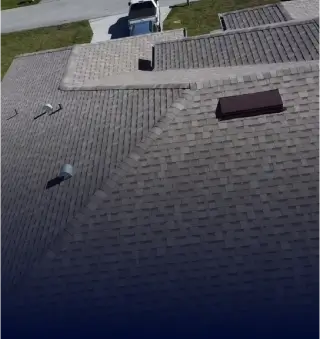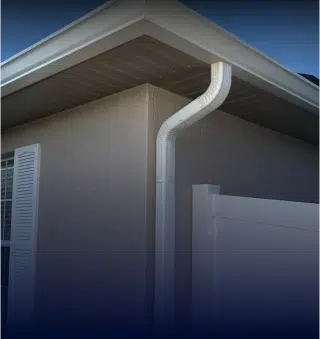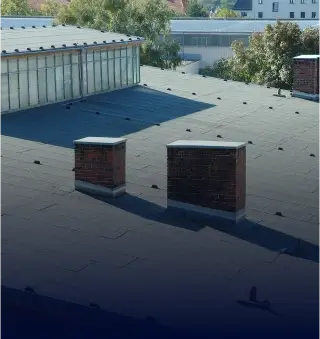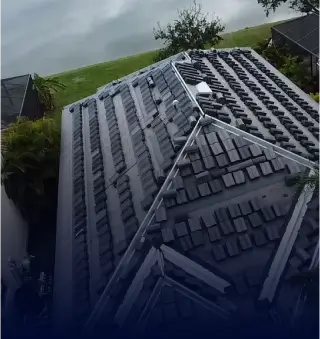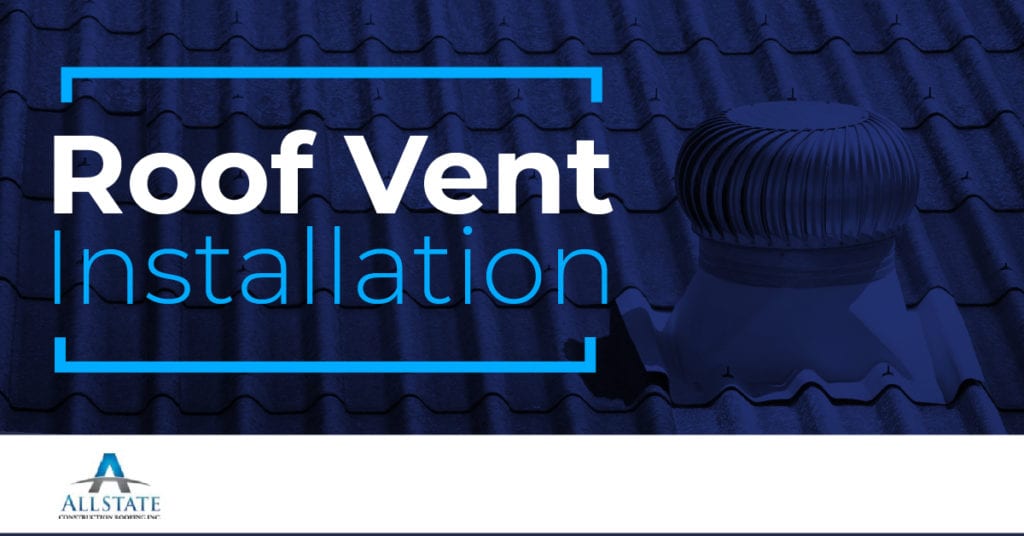
It’s understandable that roof vents get overlooked as people are often more stressed thinking about their roof and keeping their home dry. However, a well-ventilated roof may make life easier and better for everyone in your home.
Roof vents allow warm, moist air that gets trapped in the attic to escape, which, in turn, reduces pressure on your HVAC system. In colder weather, ventilation works hand in hand with your attic insulation to keep your home at an even temperature.
Allstate Construction Roofing, Inc. installs and repairs roof vents. We’re Southwest Florida’s expert roofing contractors with comprehensive roofing solutions, including roof replacement, repair, and more.
Contact us today to get a free roof inspection for ridge or attic vent installation in Bonita Springs, Fort Myers, or Naples, FL. Call today if you have any questions.
Benefits of a Roof Vent in Florida
Roof vents serve several purposes in your home, including:
- Extending the life of your roof
- Improving airflow in your attic
- Preventing moisture buildup and rot
- Lowering your energy bills
- Improving home comfort
Ventilation and insulation can make an enormous difference in your home’s well-being. You only have one roof, and roof vents help keep your roof in good condition throughout its lifespan.
Signs Your Roof Vent Needs to be Replaced
- Water stains on the attic ceiling
- Moldy and mildewy odors in the attic
- Missing or damaged shingles around the roof vent
- Damp or soft spots on the roof near the roof vent
- Pests in your attic
- Hot and cold spots in the upper levels of your home
- Rust in your home
Left unresolved, leaks and other roof vent issues can lead to considerable damage to your roofing structure, insulation, and belongings, so don’t wait to request roof vent replacement or repair from a trusted roofing company.
Types of Roof Vents We Install in Fort Myers
There are different roof vent types and strategies for achieving effective ventilation in roofs:
Ridge Vents
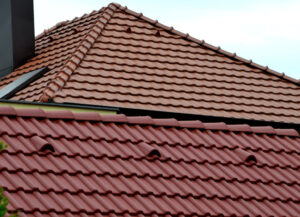
While this is not always easy to see, the open area for ridge ventilation is the space on either side of the ridge caps.
Vents along the roof peak ridges are probably one of the most critical and effective vents in any passive or non-electric ventilation system.
They’re usually installed on the roof peaks. Hot air that accumulates in the attic rises and escapes outside through the vents.
Ridge vents need cool air coming in to work correctly. As they send hot, moist air out, fresh, cool air will flow into the attic through intake vents. This equal use of hot and cool air helps the overall ventilation work properly.
Soffit Vents
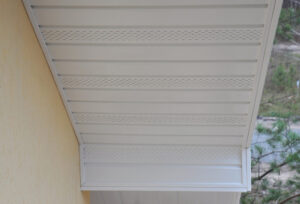
Soffits typically run in a continuous pattern parallel to the eaves. If a continuous strip-type vent wasn’t included, a circular or rectangular-shaped one might be installed instead.
Soffit vents play a big part in the ventilation of your roof. They’re there to help allow fresh air from the outside into the attic, as hot, humid air leaves the attic through ridge and gable vents, which are higher. The cooler air from outside flows into the soffit vent and pushes the more humid air outside at the same time.
Gable Vents
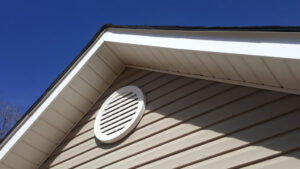
Your roofing contractor may recommend and install a gable vent if your home’s airflow is subpar.
A gable-end vent is screened and installed near the peak of the gable end. It serves two functions and can allow warm air out of the attic or fresh air in. The purpose it serves depends on the breeze and temperatures.
Powered Attic Ventilators
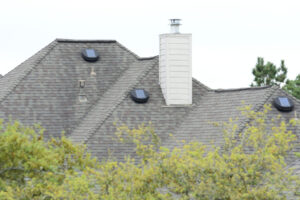
Sometimes referred to as an attic exhaust fan, PAVs come in several forms. They can be secured to the attic floor or gable end.
PAVs contain an electric fan that’s typically controlled by a thermostat. It works to exhaust hot air from the attic on hot Florida days.
A PAV isn’t typically necessary if your roof has a correctly sized ridge and vents in the soffits — that were installed correctly. It will exhaust warm air from the attic on hot summer days, but it also uses electricity.
That means it may suck cooled air from your living spaces or leaks in the attic floor, which is why many home energy experts recommend a passive roof vent over active ventilation with a PAV.
Allstate Construction Roofing, Inc. is here to help you choose the right type of roof vent for your home. Call to schedule a free roof inspection in Southwest Florida.
Why Chose Allstate Construction Roofing?
Do you have a roof that’s not ventilated properly? It may be time to ask a roofing contractor for help. We can install ridge, soffit, or gable-end vents to improve the ventilation in your roof. And the best news is that they can be installed in your existing roof or while we complete a roof replacement.
The professional team at Allstate Construction Roofing, Inc. will make your roof ventilation service as easy as possible. We can take care of all your roof vent installation and repair needs to ensure your peace of mind.
We proudly service properties throughout Southwest Florida, including Bonita Springs, Fort Myers, and Naples.
Schedule a free roof inspection for any of your commercial or residential roofing service needs by calling us today.
Frequently Asked Questions
Will roof vents fail in high winds?
Heavy rain from storms and hurricanes can enter your home through roof vents. Gable vents are more susceptible to water intrusion, so ridge vents are better suited for Florida homes.
Do I need more than one roof vent?
Yes, for optimal ventilation in attics with a vapor barrier, we recommend following the manufacturer’s recommendation for placement and spacing.
What are the differences between natural and mechanical roof ventilation?
Both will introduce fresh air into your home to help you maintain optimal comfort. Natural roof ventilation relies on wind to circulate air through your attic. This is the most common type of ventilation.
Mechanical roof ventilation uses electric-powered fans to draw fresh air into your home. Your roofing contractor will recommend a mechanical vent if the architecture of your home doesn’t support natural ventilation.
Do you need a vented roof in Florida?
Yes, you need a vented roof. Heat rises, and with our climate, the heat and humidity will accumulate in your attic.
A vented roof will release the heat and humidity from your home, helping you enjoy improved comfort and lower utility bills.
Unvented attics can also void your roofing warranty.



